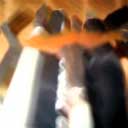 It should go without saying that a good teacher should know his or her subject area well enough to teach it without a book. Being able to and having to are much different things, however, and I for one am grateful for that. Texts are wonderful resources that can foster discussion, provide background information, and give step-by-step instructions on how to complete tasks. One book that is a good example of some of these things is Photography: A Crash Course by Dave Yorath. (Sure, I could find a lot of this stuff online, but I like the tactile nature of books as much as I like the interactivity of the internet.)
It should go without saying that a good teacher should know his or her subject area well enough to teach it without a book. Being able to and having to are much different things, however, and I for one am grateful for that. Texts are wonderful resources that can foster discussion, provide background information, and give step-by-step instructions on how to complete tasks. One book that is a good example of some of these things is Photography: A Crash Course by Dave Yorath. (Sure, I could find a lot of this stuff online, but I like the tactile nature of books as much as I like the interactivity of the internet.)
The very name implies that this book is meant to be a textbook of some kind, although it’s my opinion that it would best serve as a supplementary text rather than the main book for any particular course. As rich with information as it is, the book is only 144 pages long, including the index, and a majority of that space is filled with the book’s 400 assorted illustrations.
I must admit that the price was right. The book’s list price was $14.95, but it was in the bargain books section of Barnes & Noble for $4.99, roughly a third of the list price.
As a mostly self-taught digital photographer I found this book to be quite intriguing. True, it said little on how to do this technique or develop that kind of film, but where it lacked in instruction it made up for it in historical information. At the top of each page was also a timeline explaining what else was going on at the time that that page’s content took place – a wonderful way to help readers keep everything in context.
As much as I liked the book, I think it would actually be a bit too difficult for most of my current students (since I’m teaching elementary at the moment). My best use for the book would most likely be to digest it’s information and provide regurgitated chunks to my class as they pertain to any particular lesson. Were I still teaching high school, I think I would seriously recommend the purchase of 30 or so copies for use in the classroom. High school students would be more likely to create involved photography projects anyway.